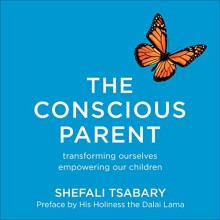Babies Circadian Rhythm
29 Jun, 2019A Circadian rhythm is your bodies internal clock. Based on a The Mammoth Cave experiment by Kleitman and Richardson, two researches who went and lived in a cave for 32 days with no exposure to light, they found by tracking their sleep and wake activity that they had circadian rhythms that continued to operate on a cycle irrespective of the lack of sunlight. Our bodies have a rhythm all on their own that is independent of the sun. On average, an adult circadian rhythm is about 24 hours and 15 minutes. Its like a wrist watch that is slightly out but gets wound back everyday by the sun, which resets our circadian rhythm through the exposure to sunlight.
Babies however, do not have a circadian rhythm. They adopt their mothers circadian rhythm based on the cortisol and melatonin they get through the umbilical cord, as these levels change in day and night. But after they are born and exposed to the world, they have no real circadian rhythm of their own and it takes about 12 – 14 weeks for them to develop a circadian rhythm or some sort and keep refining this over the next few months. A study by Vartanian, Chervenak, Walch, Pack, etc. found that melatonin suppression by light in humans is more sensitive than previously reported (as low as 7 log photons rather than 12 log photos). The study showed that it is easier for humans to be affected by blue light at night and this has implications considering the negative effects on activation of the circadian system at night.
How can I help my baby develop their circadian rhythm earlier?
The short answer is you can’t.
When our adult eyes are exposed to daylight (short wave blue light) it sends a signal to the suprachiasmatic part in our brain to secrete cortisol and melatonin and regulate our body temperature. This is partly the reason why we have blue light filters on our phones and get advised to avoid looking at electronics and avoid screen time before bed. The blue light can override our natural cyclical rhythm. Basically during the day, the short wave blue light tells our body to secrete cortisol and we are more awake and alert as we are active during the day due to being diurnal. At night we see long-wave red lights like the sunset and warm lighting at home, or our ancestors may have gathered around firelight and candles. A study by Bonmati-Carrion, Arguelles-Prieto, and Martinez-Madrid supports this “Blue light, which is particularly beneficial during the daytime, seems to be more disruptive at night, and induces the strongest melatonin inhibition.”
Research has found that just as our cyclical patterns and sleep are disrupted by phone screens and energy saving light bulbs, those annoying children’s toys and projectors with night lights are also disruptive to children because of the blue light. All the more reason not to buy them.
The best way to ensure that your baby develops their circadian rhythm is to remove any artificial lighting that could inhibit their development. At the same time, trying to artificially create a sunset and sunrise and mark day and night for them will not encourage them into developing a circadian rhythm any earlier. It will happen naturally as their brain develops over time, usually at about 6 – 18 weeks as shown by the study in 2015 of 35 health Caucasian babies born at term (Getting Rhythm: How do babies do it).
Research
Why does your baby’s sleep mater by Sarah Ockwell-Smith
Why we sleep by Matthew Walker
https://www.ncbi.nlm.nih.gov/pubmed/25526564
https://www.ncbi.nlm.nih.gov/pubmed/26017927
https://www.ncbi.nlm.nih.gov/pubmed/25245173
Cover Image by Kahalb from Pixabay
Get The Best Of Sleepy Roo Delivered To Your Inbox
Subscribe to my newsletter and get the latest info on baby sleep! You can unsubscribe at any time.



